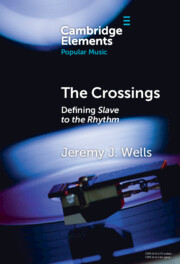Element contents
The Crossings
Published online by Cambridge University Press: 26 October 2023
Summary
- Type
- Element
- Information
- Series: Elements in Popular MusicOnline ISBN: 9781009071079Publisher: Cambridge University PressPrint publication: 23 November 2023
References
- 2
- Cited by

